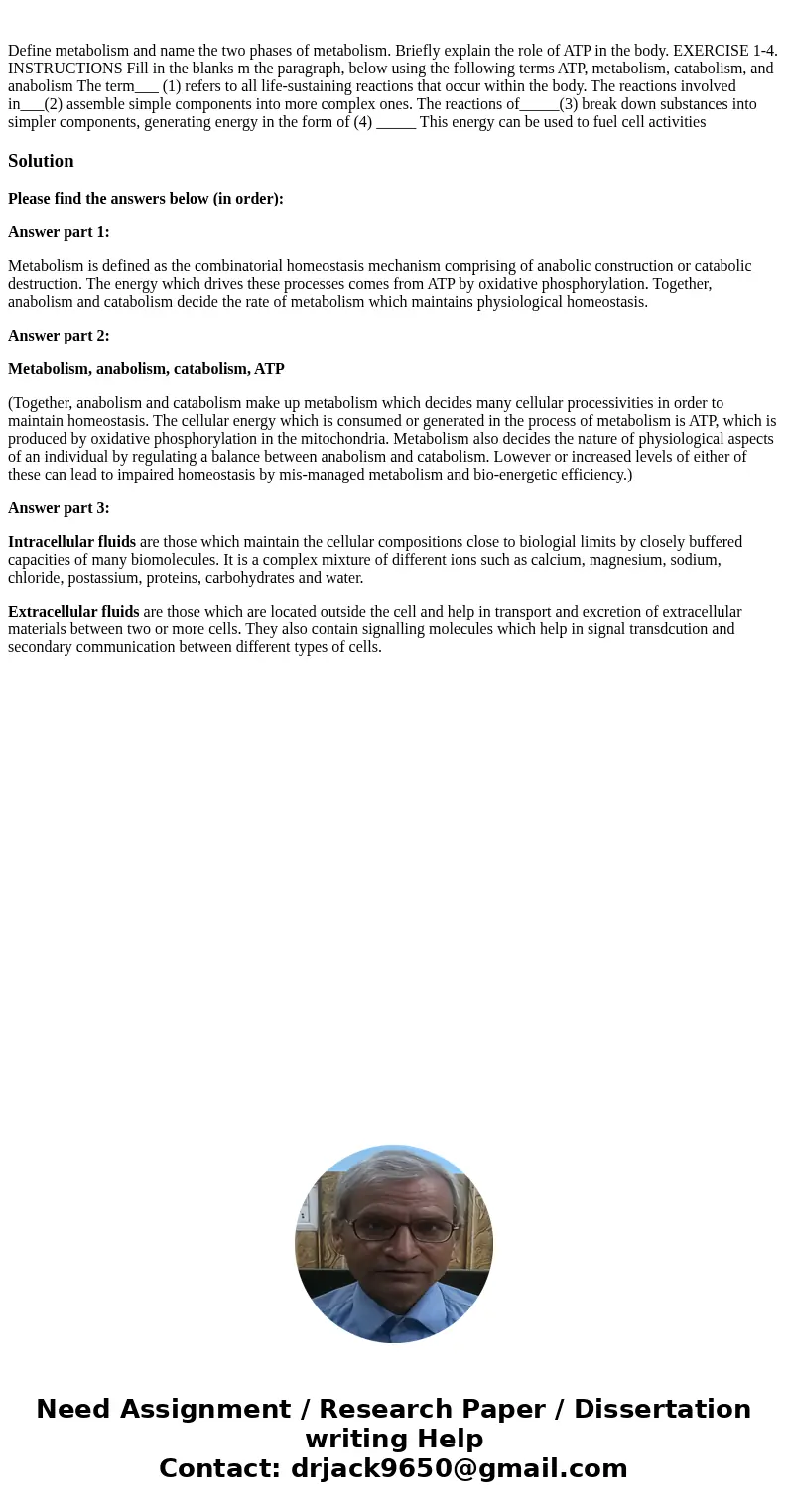Define metabolism and name the two phases of metabolism Brie
Solution
Please find the answers below (in order):
Answer part 1:
Metabolism is defined as the combinatorial homeostasis mechanism comprising of anabolic construction or catabolic destruction. The energy which drives these processes comes from ATP by oxidative phosphorylation. Together, anabolism and catabolism decide the rate of metabolism which maintains physiological homeostasis.
Answer part 2:
Metabolism, anabolism, catabolism, ATP
(Together, anabolism and catabolism make up metabolism which decides many cellular processivities in order to maintain homeostasis. The cellular energy which is consumed or generated in the process of metabolism is ATP, which is produced by oxidative phosphorylation in the mitochondria. Metabolism also decides the nature of physiological aspects of an individual by regulating a balance between anabolism and catabolism. Lowever or increased levels of either of these can lead to impaired homeostasis by mis-managed metabolism and bio-energetic efficiency.)
Answer part 3:
Intracellular fluids are those which maintain the cellular compositions close to biologial limits by closely buffered capacities of many biomolecules. It is a complex mixture of different ions such as calcium, magnesium, sodium, chloride, postassium, proteins, carbohydrates and water.
Extracellular fluids are those which are located outside the cell and help in transport and excretion of extracellular materials between two or more cells. They also contain signalling molecules which help in signal transdcution and secondary communication between different types of cells.

 Homework Sourse
Homework Sourse